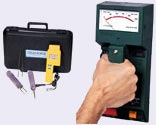|
|
Radon Testing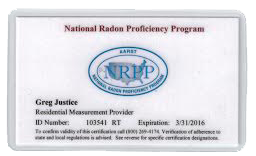
Radon is estimated to cause about 21,000 lung cancer deaths per year, according to EPA's 2003 Assessment of Risks from Radon in Homes. This is more than for other causes of death such as drunk driving, falls in homes, drownings and home fires. The Surgeon General has warned that radon is the second leading cause of lung cancer in the United States today.
Video : Radon Public Awareness
Radon Tests in Oregon by ZIP
Radon can not be seen, smelled or tasted. Radon gas decays into radioactive particles that can get trapped in your lungs when you breathe. Lung cancer is the only health effect which has been definitively linked with radon exposure. Lung cancer would usually occur years (5-25) after exposure.
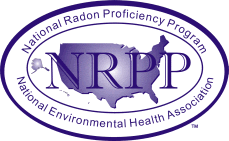
NEHA NHRP ID 103541RT |
Radon is a radioactive gas. It comes from the natural decay of uranium that is found in nearly all soils. It typically moves up through the ground to the air above and into your home through cracks and other holes in the foundation or floor slab. Your home traps radon inside, where it can build up. Any home may have a radon problem. This means new and old homes, well-sealed and drafty homes, and homes with or without basements. Sometimes radon enters the home through well water. Radon can be found all over the US and nearly 1 out of every 15 homes in the US is estimated to have elevated radon levels.
Testing is the only way to know if you and your family are at risk from radon. EPA and the Surgeon General recommend testing all homes below the third floor for radon. The amount of radon in the air is measured in "picoCuries per liter of air," or "pCi/L." The action level recommended by the U,S. EPA for radon mitigation is 4pCi/L.
Justice Property Inspections has been trained, tested and certified with the National Radon Proficiency Program. Justice Property Inspections utilizes a Continuous Radon Monitor (CRM) which provides a Radon test reading 48 hours after the unit has been set in the home. This eliminates the need for sending the device out to a lab for analysis.
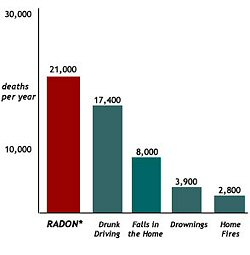 |
National Radon Results
Since the mid-1980s the United States has made significant progress in reducing the risk from exposure to radon. This progress is the result of a long-term effort between EPA, citizens, nonprofit organizations, state and local governments, the business community, and other Federal agencies working together. More adult Americans are knowledgeable about radon than at any time since the mid-1980s, when radon became a National health concern. Approximately two-thirds (66%) of Americans are generally aware of radon, and of those three-quarters (75%, on average) understand that radon is a health hazard. Since the mid-1980s, at least 18 million homes have been tested for radon and nearly 800,000 existing homes with elevated radon levels have been mitigated. Read complete article...
Radon Links
EPA - Oregon Map of Radon Zones
EPA - National Map of Radon Zones
EPA - Indoor Air Radon (Rn)
EPA - Radon Measurement Method Definitions
EPA - National News
Surgeon General - National Heal Advisory on Radon
Call to Schedule Radon Testing Today!
1-888-414-4107
|

EDI Certified #OR-53
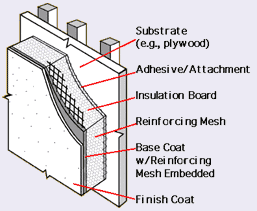
|
EIFS
Exterior Insulation Finish System, otherwise known by the acronym EIFS or the brand name Dryvitョ, is an exterior wall covering that is made to look like traditional portland cement stucco. The concern that has arisen with EIFS that if it is not properly installed or maintained, then moisture can penetrate through openings in the cladding and become trapped. In the case of a wood framed structure, the trapped water is absorbed by the wood and wood rot, decay, fungus, and insect infestations become problems, none of which are externally visible.
Because of the insidious nature of the problem, detailed visual inspections and moisture analyses by experienced and certified EIFS inspectors are recommended on buildings with this type of cladding system. Our inspectors use electronic moisture scanning instruments with visual inspection to evaluate for problematic areas. Opinions are rendered as to the acceptability of the moisture levels and recommendations are made for repairs.
- Over 99% of the tested EIFS homes have excessive moisture (over 20%) in at least one area.
- In most cases we have been able to identify the source of the water intrusion and make specific recommendations to help eliminate it.
- The age of the house usually determines how much, if any framing damage has occurred.
- A helpful formula is : Quantity X Time = Damage. In other words, the amount of damage that occurs is directly proportional to the length of time water has been leaking into the system and/or the amount of water that leaks into the system at any given time.
- Serious and costly damage can be avoided if problems are identified and remedied quickly.
- A comprehensive inspection and moisture test is critical to identifying and rectifying problems.
- There are a lot of unqualified people performing EIFS inspections.
What about new houses with EIFS systems?
We have found excessive moisture in houses that are less than 3 months old. A few good rains are all that is needed, and inaction may result in costly repair bills.
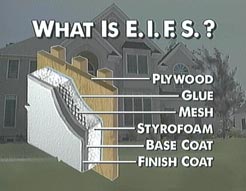 |
What is involved in the EIFS test?
The protocols call for the house to be tested extensively. A noninvasive scanner may be used, but only to identify areas of excessive moisture and determine which areas should be probed. This device will not read the exact moisture content. An invasive probe meter is required to perform this test, as the recommendations are based on the moisture content. The scanner will drastically reduce the number of probes needed and will typically identify more trouble areas than the probe alone. Don't believe the companies that are too lazy or incompetent to do the job right and try to scare you by saying that probing causes hundreds and hundreds of holes. Since I've been using the scanner, the amount of probes needed has dropped 80-90%. An average house house may have 50 holes. After they're filled, I'll bet that you can't find them unless I show them to you.
Very Important : A scanner cannot be used alone unless no areas of excessive moisture are found. The wet areas must be probed for rot and ACTUAL MOISTURE CONTENT, then mapped to meet the test protocol. It should also be noted that neither instrument will detect damaged areas that are not wet, although probing does allow you to feel the firmness of the structure.
Will the holes be noticeable?
Usually no, and as I said before, the amount of needed holes has dropped drastically. Our typical test requires 20-40 probes. The holes are small, about 1/8th inch in diameter. Each probe consists of 2 holes, 1 inch apart. We carry every color of sealant available, and can usually achieve excellent color matches. Sample holes can be demonstrated for the owner and their approval received before any more probes are created. Unless they know where to look, most people cannot find our holes after they are patched.
EIFS News
National Class Action Against Dryvit Settled and Approved by Court
On January 14, 2003, the Circuit Court for Jefferson County, Tennessee, granted final approval of a class action settlement in Posey v. Dryvit Systems, Inc., Civil Action No. 17,715-IV. The Settlement covers all persons or entities who, as of June 5, 2002, own a one- or two-family residential dwelling or townhouse in any State other than North Carolina clad, in whole or in part, with EIFS manufactured by Dryvit Systems, Inc. and installed after January 1, 1989.
This settlement may affect you, as Dryvit EIFS was installed on many houses in the State of New Jersey and in the northeast in general. If you fall into the Class described above, the deadline to file a claim form to participate in this settlement is June 5, 2004. You can obtain information about this settlement at www.stuccosettlement.com.
Determine if You Have a Problem
Do you have EIFS or Stucco?
EIFS was designed to look like traditional stucco. To determine if you have traditional stucco or EIFS, knock on the siding. Real stucco feels hard and sounds solid when tapped. If this test is not determinative, inspect areas where the stucco meets light fixtures, gutter straps, or other interruptions in the stucco. Look for the layer of Styrofoam. If you see it, you have EIFS. If you still can't tell if you have EIFS on your home, contact a qualified inspector.
I do have EIFS. Do I have a problem?
Once you've determined that you have EIFS, it is important to find out if moisture has penetrated the EIFS cladding and if damage to the structure has occurred. There are several warning signs to look for. These include:
- rotting of wood trim
- bulges or cracks in the EIFS
- an increase in the level of humidity inside the home
- swelling or cracking of wood window frames inside the home
- mold, mildew, or fungi on the exterior walls or on window frames
- ants or insects that won't go away
- termites
- cracking of drywall
- peeling or bubbling of paint on the exterior walls
- delamination, or a separation of EIFS from the sheathing
I see signs of possible damage. What should I do?
If you suspect damage, have your home tested by a qualified professional. When researching local inspectors, make sure to ask if the inspector has expertise in moisture intrusion inspection techniques associated with EIFS. The inspector will use a special tool, such as a Delmhorst or Lignom meter, to probe the EIFS siding to ascertain the precise moisture level behind the exterior. Readings above 20% are considered problematic, and those above 30%, severe. Ask too if the inspector is familiar with the EIFS Review Committee's test protocol or uses other EIFS-related protocols.
There is damage to my home or severe moisture intrusion. What should I do?
Once you or an inspector has determined that there is damage or dangerous levels of moisture, you will have to decide what to do about the problem. Your choices are to repair the existing synthetic stucco or to remove it and replace it with a different siding. Some builders as well as the manufacturers of EIFS believe that repair of existing deficiencies in your EIFS siding is sufficient. Typical repairs might include re-application of sealants, installation of appropriate flashing, or repairs to make sure the synthetic stucco is an appropriate distance from the ground. Some experts, however, feel that none of these steps is adequate as long-term protection of the home from moisture. Even if EIFS is repaired, they argue, moisture tests must be performed regularly for the life of the home, which will remain susceptible to moisture intrusion.
If you have determined that your EIFS-clad home is damaged or has high moisture levels behind the EIFS surface, you may be eligible to file a claim against the manufacturer.
EIFS Links
EIFS Info Kit
What Is EIFS?
Call to Schedule EIFS Moisture Intrusion Analysis Today!
1-888-414-4107
|
|








